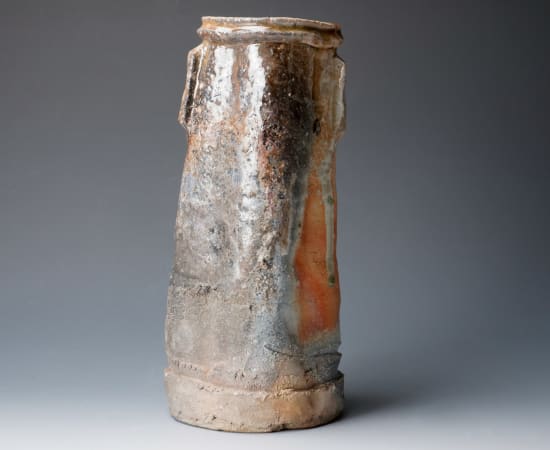A leading Iga and Shigaraki potter, Sugimoto is a quiet, modest person. His traits were enhanced by this study with Zen master Tachibana Daikiro in Daitoku-ji temple, before his Zen monkhood. Sadamitsu’s Shigaraki is subtle and elegant, while his Iga is composed and balanced. He captures raw ash fired surface in harmony and with attention to composition and form. Sugimoto works with an Anagama kiln that he built, and has been devout to Iga, Raku, and Shigaraki since the 1970s.
One of the Six Ancient Kilns of Japan, we may trace origins of the kilns of Shigaraki and its wares back to the Tenpyo-era (729-749): When the Tenpyo Emperor Shomu first built his Shigaraki Palace, the roof tiles and earthenware pipes were fired for its construction. These earthenware captured the quality of clay. Later in the Kamakura period, various functional pieces such as jars and water containers in Shigaraki were fired for everyday use. When the tea ceremony came in fashion after the Muromachi period, tea wares were developed according to the tea people’s taste. Soon, the connoisseurial taste for raw ash fired, unglazed surfaces blossomed.
The history of clay in the Shigaraki region is also one of functional wares. In its history, there are many styles named after tea masters such as Jo-o Shigaraki, Rikyu Shigaraki, Sotan Shigaraki, Enshu Shigaraki. Diverse objects for daily use such as tea caddies, small jars, tea bowls, hand-warmer pots, and large jars were produced. As one of Japan’s Six Ancient kilns, the tradition of beauty has been polished and succeeded throughout history until today. As a part of this tradition, Sugimoto Sadamitsu's shigaraki clay reflects history.



